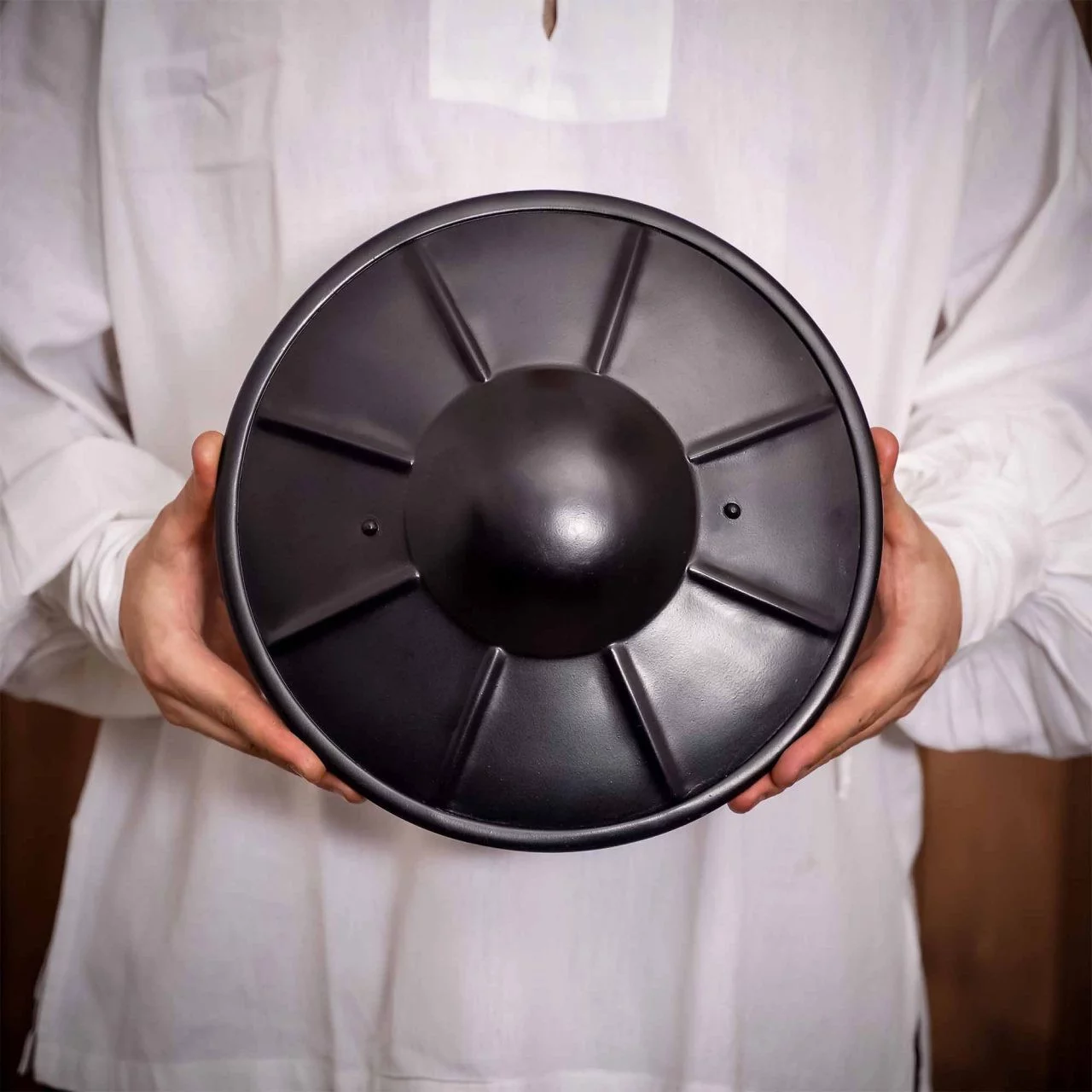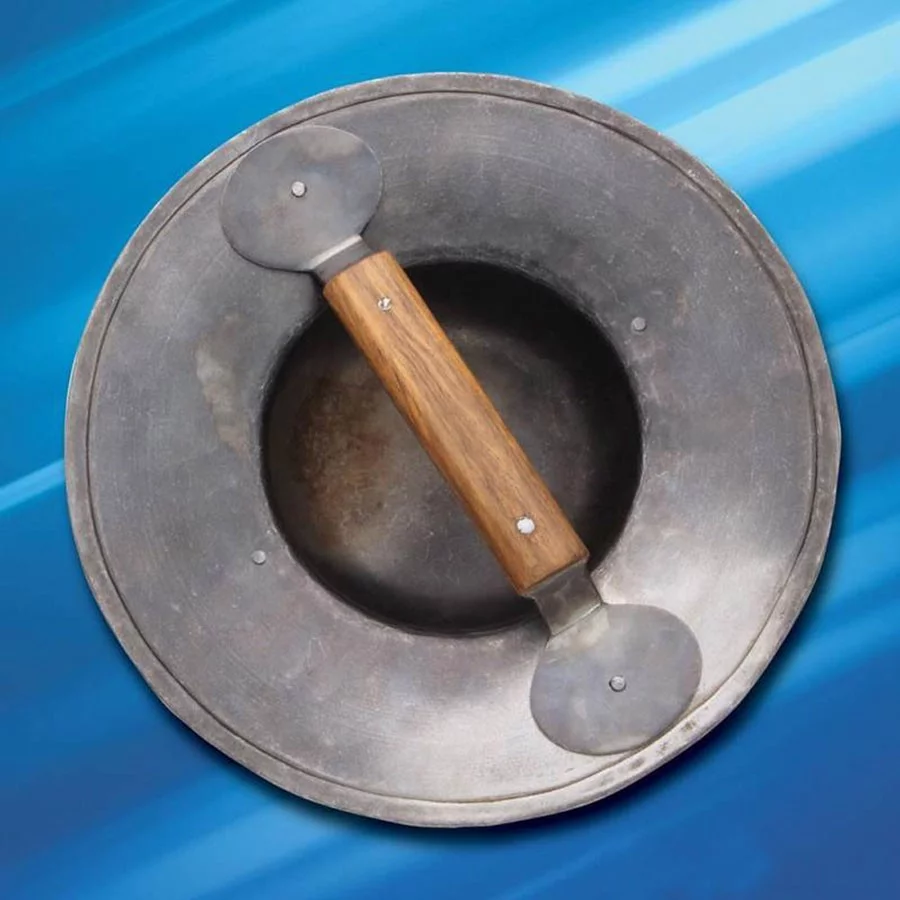What is a Buckler?
The buckler is a type of small, circular shield that played a significant role in personal defense during the Middle Ages and the Renaissance. Its functional design made it a valuable tool for warriors of the time. Below, we will explore its origin, characteristics, types, and its use in combat in a clear and educational manner.
Origin and Definition
The term "buckler" comes from the Latin "bū[c]cula," which refers to "small mouth" or "cheek." This small shield, made from materials such as iron, steel, or wood, was often covered with suede. A distinctive feature of the buckler was its central boss or "umbo," which allowed for a secure and effective grip.
Main Characteristics
- Size: Its average diameter is approximately 23 cm.
- Weight: It generally weighs around 0.9 kg.
- Material: Commonly constructed with 2 mm thick steel.

Combat Functionality
The buckler not only served as defense but was also fundamental in close combat. By using it alongside weapons like the rapier, warriors could:
- Protect their hand from the opponent's attack.
- Deflect blows thanks to its curved design.
- Directly attack the adversary with strikes from the edge of the buckler.
Types of Bucklers
There are two main forms of bucklers documented:
- Round Buckler: Simple and effective, with the grip located behind the umbo.
- Corrugated Rectangular Buckler: A design suggested by Achille Marozzo in his work *Opera Nova*.
Evolution and Cultural Significance
From the 12th to the 17th century, the buckler gained popularity not only as a defense tool but also as a status symbol in certain cultures. Its adaptation to different fighting styles and its effectiveness in battles have ensured its place in the history of weapons.

In the practice of medieval fencing, texts like MS I.33 present the buckler as an essential instrument for combat, emphasizing its ability to protect the warrior while allowing effective attack techniques. This shield, with its clever design, has remained a fascinating object in military history.




























